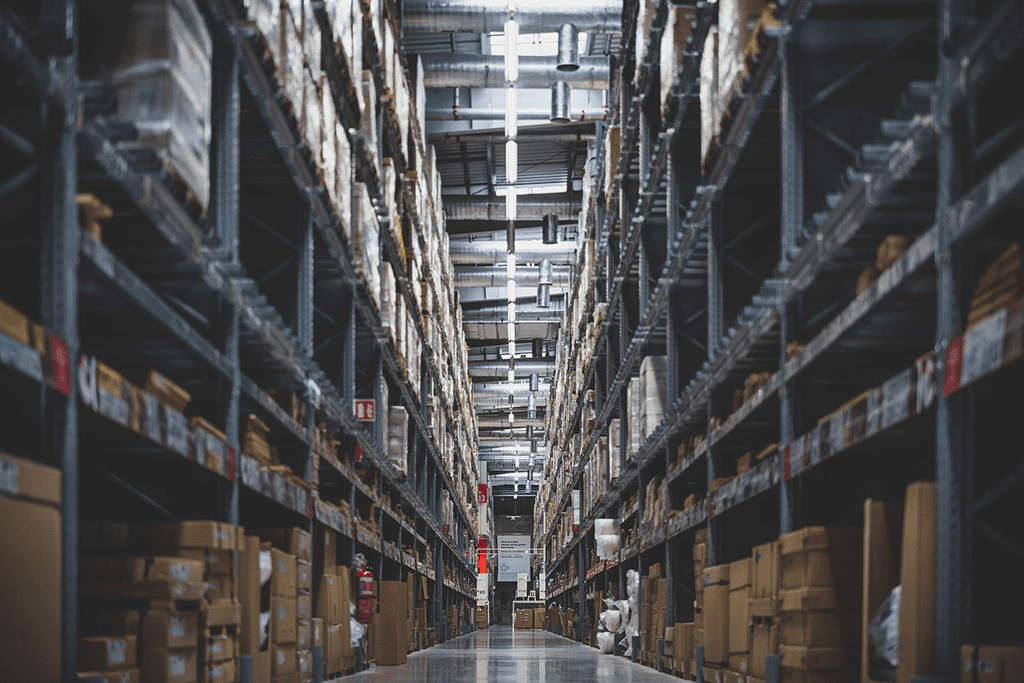If you’re in the retail business, one of your worst nightmares is being stuck with boxes and boxes of unsold inventory taking up space in your warehouse. Wasted stock can be a huge cost to your bottom line and pose serious risks to your business. For eco-conscious brands, a lot of unsold inventory is also detrimental to the environment, especially if the products are textile-based. Of the more than 100 billion items of clothing produced each year, some 20% go unsold leftovers are usually buried, shredded, or incinerated (Forbes). Businesses that end up in an overstock situation generally use traditional bulk manufacturing which requires products to be made and then warehoused until they are shipped. While there is a risk of costly unsold inventory, bulk production can also be economically effective if a product is proven to be a best-seller.
On the opposite side of the spectrum sits on-demand manufacturing – a process by which goods are produced only when they are needed and, in the quantities, required, eliminating the cost and effort of storing and managing inventory. Although on-demand products are not produced at economies of scale, businesses can more easily and quickly test and go to market with new products and designs.
Previously, businesses would need to choose one method or the other but with recent advancements in technology in the past decade, retailers can get the best of both worlds through hybrid manufacturing. An economically and environmentally sustainable solution, a hybrid approach blends the cost-effectiveness of bulk production with the risk-free per-order fulfillment process of on-demand manufacturing.
How Hybrid Works
Before adding any new item to product lines, experts recommend testing them through on-demand manufacturing to ensure viability. An on-demand approach gives retailers the freedom to sell more SKUs and products that they might not think will take off en masse. Once retailers know a product has the potential to move into mass production, the switch can be made. Eventually, when interest wanes and the product becomes more evergreen but to a smaller audience, retailers can realize ongoing value by going back to an on-demand approach.
Why Utilise a Hybrid Approach
Adapt to trends quickly without risk. Culture is now manufactured on-demand and consumers are setting trends on social media. Because buyers are now changing the way we capitalize on culture, it is affecting how brands produce and manufacture products on-demand. With a hybrid approach, brands can quickly mockup a design and add the product to their online store without prepaying for costly order minimums by first using on-demand manufacturing.
Improve cash flow. When a business utilizes a blend of on-demand and bulk manufacturing for its products, it can more easily optimize its cash flow. For bulk products, they can get a higher per product profit margin due to economies of scale. For on-demand products, they don’t have to pay for costly inventory or order minimums, freeing up a business’s cash flow.
Shift toward sustainability. Being eco-conscious is no longer a consumer marketing trend, it is a real practice many businesses are implementing in their business model. Because on-demand manufacturing allows companies to produce only what consumers order, it eliminates unnecessary production and harmful waste—saving both the business’s bottom line and the environment.
Be better prepared for economic disruptions. When COVID-19 disrupted supply chains across all industries last year, many retailers were forced to shut down and were left with boxes of unsold inventory. When utilizing on-demand manufacturing in a hybrid approach, it is important to look for a provider that manages a distributed supply chain network. This type of fulfillment process allows on-demand manufacturing providers the ability to carry a large number of product SKUs in more than one facility, therefore orders of that product are able to be fulfilled in multiple locations.
Source: Global Trade Magazine
Read the full article here
August 16, 2021













